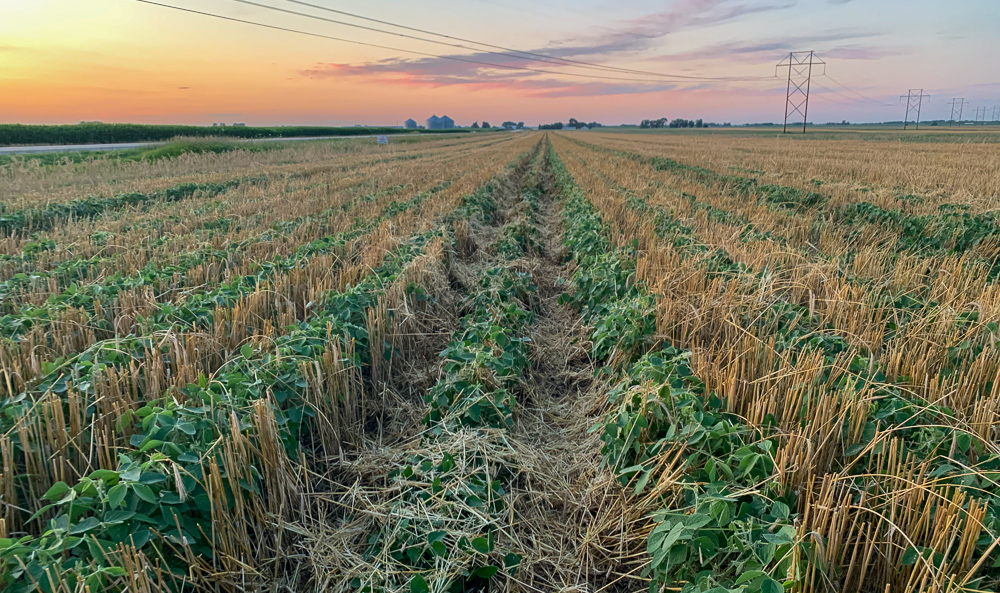
Relay cropping is giving farmers the opportunity to have a root in the soil 365 days a year. (Submitted photo)
Relay cropping experimentation shows promise
November 5, 2020
While Iowa farmers continue to grow large quantities of soybeans and corn, there has been a push to incorporate small grains back on the landscape, primarily as a cover crop. Cereal rye is hardy, nitrogen scavenging, and quality forage for livestock. Modern no-till planting equipment can easily establish soybean crops into stands of living rye. It’s a practice more farmers are using to achieve various stewardship, economic, and agronomic goals.
Research is clear on the effect of small grains in crop rotation with warm season crops of corn and soybean. Extensive fibrous roots help aggregate and stabilize the soil, early growth helps to suppress weeds, and nutrient cycles change in predictable ways to reduce potential loss from the system. There are also challenges, ranging from quality issues resulting from a humid climate to highly-variable yield, and inconsistent markets. The joke goes that there are many reasons to grow small grains, but money isn’t usually one of them.
All joking aside, as farmers consider the big picture, one thing is clear: Iowa soils and waterways benefit from small grains on the landscape and these can complement soybean, corn, and livestock production.
Several Iowa farmers have been experimenting with relay crops of small grains with soybeans. Working together with Northeast Iowa Resource Conservation and Development, Iowa Soybean Association farmer cooperators have implemented replicated strip trials testing this method compared with sole crop soybeans. This involves seeding soybeans early in the growing season while the cereal rye is still in vegetative growth stages. The soybeans grow together with the rye and, when the rye reaches maturity, it is harvested above the canopy of soybeans growing below. The soybeans then proceed to maturity generating two grain crops.
Across all sites, rye yields ranged from 30-55 bushels per acre, with soybean yield reductions of 5-20 bushels per acre. While there are additional management costs associated with this system, the sites that produce seed quality rye and minimal soybean yield reductions can make economic gains and generate the soil and water quality improvements that come with small grains.
Trials results are being processed to complete the 2020 growing season, and planning for 2021 trials is underway. Identifying the necessary management refinements and agronomic details of this system can help generate more local seed for cover crops and forage, generate environmental improvements, and produce marketable soybean crops at the same time.
Back